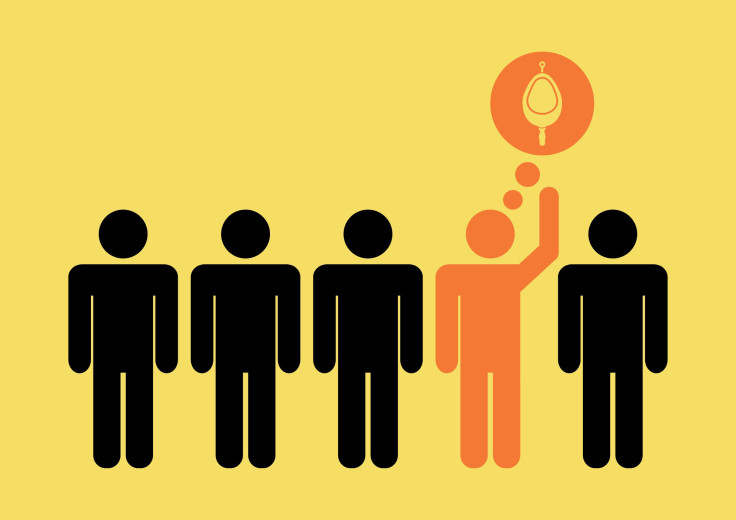The Science Of 'Breaking The Seal': Urge To Urinate Comes More Often With Inhibition Of Anti-Diuretic Hormone

Once you go that first time, you’ll be going all night. "You’re going to 'break the seal,'" your buddy shouts after you as the bathroom door hits you in the back. Alcohol’s effect on the antidiuretic hormone (ADH), also known as arginine vasopressin, is to blame for bar bathroom lines or dreaded tailgating port-o-potty visits.
The cycle starts and ends with ADH, which is produced in the hypothalamus — the part of the brain that controls a number of bodily functions, including hunger, thirst, sleep cycle, and body temperature. The hormone is stored and released from the pituitary gland, where it controls the amount of water released from the kidneys into the urine. It retains a healthy amount of water by creating a permeable area in the kidneys, which helps to keep water flowing back into the bloodstream instead of out through the urine.
High levels of ADH cause the kidneys to retain water inside the body, which ultimately makes you have to go to the bathroom much less. Thirst, nausea, vomiting, pain, and sleep all cause an increase in the hormone in an effort to retain water. It’s the reason why an otherwise healthy person won’t pee their bed as they sleep, according to the Society for Endocrinology.
Alcohol, on the other hand, prevents the ADH from releasing, which is what causes an increase in urine production and dehydration. It’s like removing the dam in your kidneys and causing water to free more quickly into your urine. You keep running to the bathroom, but because your body doesn’t have ADH to retain water, you’re also really thirsty so you drink more alcohol — and the cyclical mayhem continues all night long.
"[Alcohol] decreases your ADH and you are producing more fluid. So when you produce more fluid and you fill your bladder more, you suppress more ADH," Urologist Dr. Courtenay Moore, from the Glickman Urological and Kidney Institute at Cleveland Clinic, said in an interview with NBC News. The bladder will become irritated and can lead to an uncomfortable feeling often mistaken for having a full bladder, despite itself.
You’ve Broken The Seal
It only takes a small amount of alcohol to block ADH, and as you continue to drink, your ADH levels continue to drop while urine production increases. By your third or fourth drink, it’s more than likely your body is screaming at you to run to the bathroom and release. By the time you make that first initial pee, your ADH is even more suppressed because the alcohol continues to block its ability to retain water in the body. Your kidneys are engaged and working smoothly, which is why you’ll need to go more often.
If you’re drinking beer, champagne, jack and coke, or anything with soda, the carbonation will make the urges to pee stronger. The carbonation of drinks can cause gas and pressure, which when combined with a full bladder and no brakes (ADH), your bladder will feel fuller than it is in reality. It’s not a myth or some psychological mumbo-jumbo — your body is going through these physiological changes with each sip of your Sunday mimosas or Tuesday twofer special. Run to the bathroom all you want, there’s no stopping it.



























